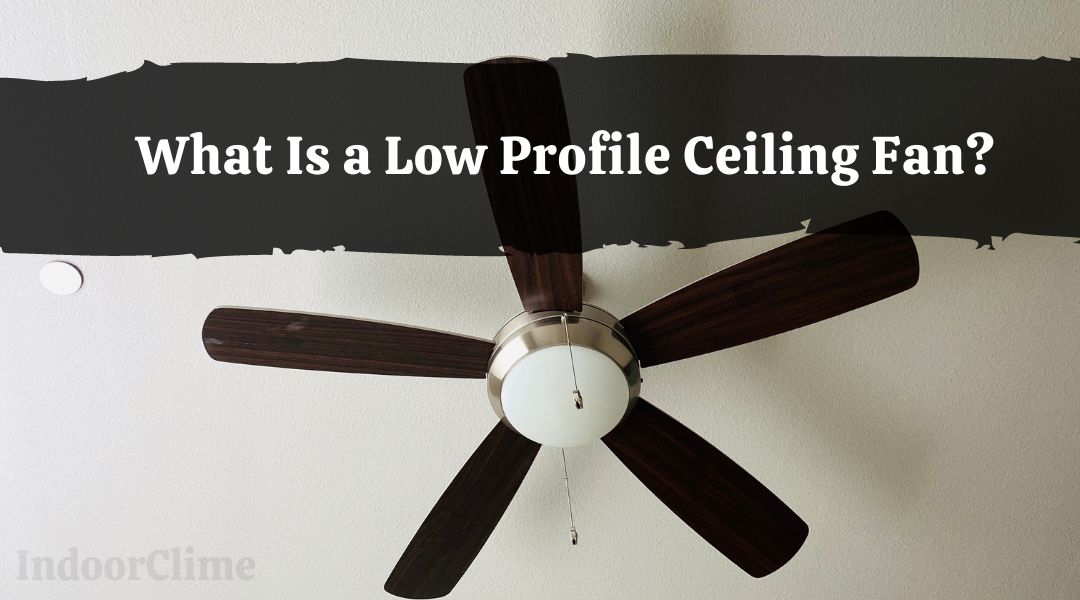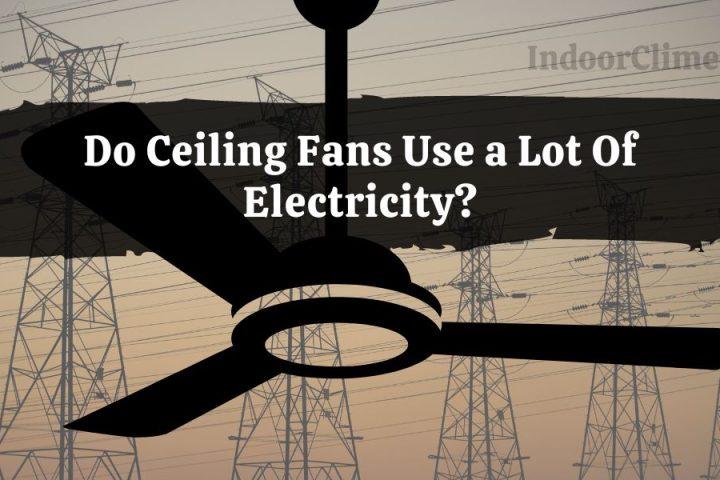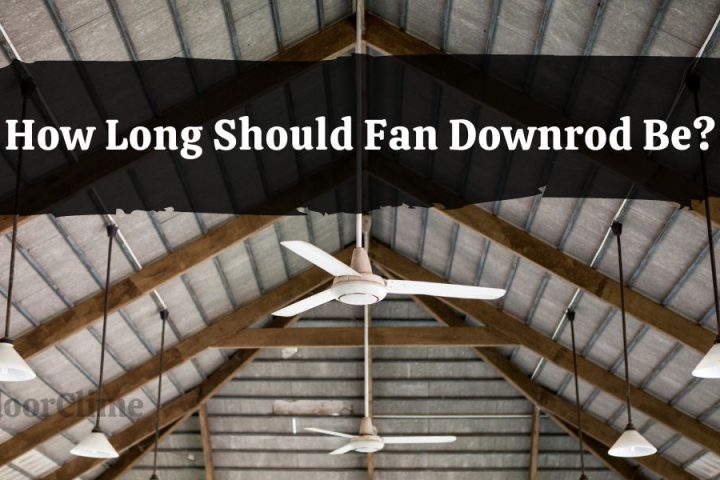Thanks to significant industry advancements, modern low-profile ceiling fans have many of the same capabilities as standard ceiling fans.
Depending on the model, you may benefit from reversible motors, different speed settings, silent motors, dimmable light kits, and more.
What Is a Low Profile Ceiling Fan?
Because they don’t need a down rod, low-profile ceiling fans can be mounted much closer to the ceiling. Instead of hugging the ceiling, these fans are flush-mounted.
These fans frequently include blades with a little upward curve, reducing their size and making them ideal for tight locations in your home.
You don’t have to give up on adding more airflow to your home because a room has a low ceiling or limited space. No matter the size of your area, you can feel the breeze and cool down with a low-profile ceiling fan.
How Low Does a Low-profile Ceiling Fan Hang?
For several reasons, you’ll need a low-profile fan if the ceiling height in the room where you want to install a ceiling fan is less than 8′. To ensure safety, the fan’s blades should be at least 7 feet off the ground as a general rule of thumb.
To prevent the blade tips from striking and harming the walls in your home, they must also be at least 30 inches away from the closest structure.
Do Low-Profile Ceiling Fans Work?
Low-profile ceiling fans, called close-mount, hugger, or flush-mount ceiling fans, feature a flatter, slimmer motor housing than conventional ceiling fans.
They are a fantastic alternative for spaces with lower than eight feet ceilings since their blades are closer to the ceiling when hung.
Advantages:
- Low-ceilinged spaces benefit greatly from low-profile ceiling fans, whether indoors or out.
- Hugger ceiling fans may enhance the lighting in your space and offer style.
- Because of their compact motor housing, close-mount ceiling fans conserve vertical space in smaller spaces with low ceilings.
- Ceiling fans can greatly enhance the comfort of a space. A low-profile ceiling fan is a perfect solution because smaller spaces are considerably harder to cool and can become hot and stuffy quickly.
- Ceiling fans use less electricity than air conditioners, lowering operating costs. Although ceiling fans don’t alter a room’s temperature, they help with airflow and ventilation, which helps keep occupants comfortable.
- If you use a ceiling fan, you can raise the temperature by four degrees without noticing a difference in comfort.
- Instead, many low-profile ceiling fans today have strong DC motors that can produce remarkable power and performance.
- Despite being as powerful as their predecessors, these new motors are more energy-efficient and compact. This is great news for the summer when you’ll run your fans nonstop to fight the heat.
Disadvantages:
- Unfortunately, airflow is a disadvantage with low-profile ceiling fans. Because of their close closeness to the surface, there is less room for air to be whipped about and bounce off the ceiling.
- As a result, airflow is reduced compared to fans of the same size, power, and blade length. As a result, it is less effective in cooling a space.
- A compact, spotless, low profile, balanced ceiling fan in excellent condition ought to whisper silent. However, the truth is that with almost any ceiling fan, the weight shifts, the blades move slightly over time, and screws can loosen.
- As a result, if they are not maintained properly, they are likely to change from a quiet whirr to a slightly louder motor sound that may keep light sleepers awake or be mildly distracting in a quiet room.
- Examining your ceiling height and the heights of your family members and, possibly, often visiting acquaintances is crucial. Anyone taller than six feet may risk banging their heads in a room with low ceilings.
- That’s not too awful when the fan is off, but it could hurt if the blades spin at full power. This isn’t an issue if you have high ceilings (or are short), but since the lighting fixture, motor, and blades all work together to make a ceiling fan taller than you might imagine, it’s something to keep in mind.
How High Should a Ceiling Fan Be Off the Floor?
Install ceiling fans in the middle, 7 feet above the floor, and 18 inches from the walls. Place the fan 8 to 9 feet above the floor if the ceiling height allows.
Things To Consider Before Buying Low Profile Ceiling Fan?
When selecting a flush-mount ceiling fan, there are several things to remember.
Size
The most crucial factor to consider when buying a ceiling fan is size. It’s not as hard to get the proper size ceiling fan as you imagine. The square footage of each room will affect how long the fan’s blade span is; the bigger the space, the longer the fan’s blade span.
Ensure your ceiling fan blades are at least 18 inches from the room’s walls for maximum performance, advantages, and safety.
Vertical space must also be taken into account. For ceilings that are eight feet or less, flush-mount ceiling fans are perfect.
Your ceiling fan needs to be at least seven feet above the ground for safety and effectiveness, but eight to nine feet will provide you with the optimum airflow.
Mounting Options
The fan is fixed firmly against the ceiling using flush mounts. However, several manufacturers make “hugger” or “low profile” ceiling fans specifically built for this purpose. Most regular fans can be placed as a flush mount.
Hugger fans are perfect for spaces with ceilings less than 8 feet high or when a fan with an optional light would dangle too low. Hugger fans’ proximity to the ceiling prevents them from moving as much air as a standard fan.
A low-profile fan has a down rod and hangs up to 12 inches from the ceiling. A hugger or flush-mount fan is suspended directly from the ceiling.
Choose a low-profile or hugger ceiling fan if your living area has a low-hanging ceiling. Choose a rod-mount ceiling fan if your ceilings are higher.
Design
Your home is a financial commitment. Select fixtures that you will value over time. Every space can look better and feel more comfortable by using ceiling fans.
Ceiling fans are adaptable and come in various styles to suit your preferences. You can pick a pre-made fan with a unique design that fits your preferences, like modern, rustic, nautical, traditional, vintage, and more.
You can customize your ceiling fan by choosing a different motor housing design, color, form, finish, and material from some fan manufacturers. By including shades or other fixtures, you can vary the design of your light kit and add new functionality.
You’ll be shocked to learn that your ceiling fan can create a fashion statement, as impossible as it may sound. Of course, many alternatives exist, but each model has an appealing and distinctive style.
From sleek, modern finishes to graceful antique designs, you may choose a fan that complements the interiors of your carefully designed décor.





